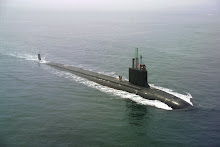Download at:
INTEGRATING PERSONNEL MOVEMENT SIMULATION INTO PRELIMINARY SHIP
DESIGN
D Andrews, L Casarosa and R Pawling, University College London, UK
E Galea, S Deere and P Lawrence, University of Greenwich, UK
SUMMARY
Traditionally, when designing a ship the driving issues are seen to be powering, stability, strength and seakeeping.
Issues related to ship operations and evolutions are investigated later in the design process, within the constraint of a
fixed layout. This can result in operational inefficiencies and limitations, excessive crew numbers and potentially
hazardous situations.
This paper summarises work by University College London and the University of Greenwich prior to the completion of
a three year EPSRC funded research project to integrate the simulation of personnel movement into early stage ship
design. This integration is intended to facilitate the assessment of onboard operations while the design is still highly
amenable to change.
The project brings together the University of Greenwich developed maritimeEXODUS personnel movement simulation
software and the SURFCON implementation of the Design Building Block approach to early stage ship design, which
originated with the UCL Ship Design Research team and has been implemented within the PARAMARINE ship design
system produced by Graphics Research Corporation. Central to the success of this project is the definition of a suitable
series of Performance Measures (PM) which can be used to assess the human performance of the design in different
operational scenarios.
The paper outlines the progress made on deriving the PM from human dynamics criteria measured in simulations and
their incorporation into a Human Performance Metric (HPM) for analysis. It describes the production of a series of
SURFCON ship designs, based on the Royal Navy’s Type 22 Batch 3 frigate, and their analysis using the
PARAMARINE and maritimeEXODUS software. Conclusions on the work to date and for the remainder of the project
are presented addressing the integration of personnel movement simulation into the preliminary ship design process.
skip to main |
skip to sidebar
كشتي سازي نرم افزار محاسبات طراحي دريا دريانوردي naval architecture,shipdesign,shipbuilding, warship,naval software, crack ,fastship,shipweught, acad,solidworks,catia,hull, expansion,webframe,rhino,RCS, seakeeping,maxsurf,seakeeper
Me:
Search This Blog
old posts
- design (2)
- naval (2)
- ship (2)
- "Approaches to preventing or mitigating adverse effects of ship motion on crew (Bittner (1)
- "Critical Significance of Human Factors in Ship Design" (1)
- "High Speed Marine Vehicles" (1)
- "PERSONNEL MOVEMENT SIMULATION" (1)
- "sea state" (1)
- 1987) Criteria with regard to accelerations and roll [RMS] (NORDFORSK 1987) (1)
- Extrapolation (1)
- Guignard 1985)" (1)
- INTEGRATING (1)
- ISO 2631" (1)
- MOVEMENT (1)
- Methods (1)
- Operability criteria General operability limiting criteria for ships (NORDFORSK (1)
- PERSONNEL (1)
- PRELIMINARY (1)
- SIMULATION (1)
- Seasickness (1)
- Testing (1)
- Testing and Extrapolation Methods High Speed Marine Vehicles Seasickness Fatigue ISO 2631 (1)
- Type of motion cue mismatch produced by various stimuli (Griffin 1991a) (1)
- aRCHITECTURE (1)
- basic (1)
- conceptual (1)
- level (1)
- warship (1)
Blog Archive
-
▼
2009
(23)
-
▼
July
(15)
- Fast Ship Free DownLoad + crack
- shipworks v6
- NAVAL aRCHITECTURE TEXT BOOK
- ship design-basic level
- Critical Significance of Human Factors in Ship Design
- warship naval conceptual design
- Testing and Extrapolation Methods High Speed Marin...
- INTEGRATING PERSONNEL MOVEMENT SIMULATION INTO PRE...
- Approaches to preventing or mitigating adverse eff...
- Criteria with regard to accelerations and roll [RM...
- Type of motion cue mismatch produced by various st...
- MINE WARFARE
- sea state levels table
- DESIGN
- at the first,in the name of GOD
-
▼
July
(15)

